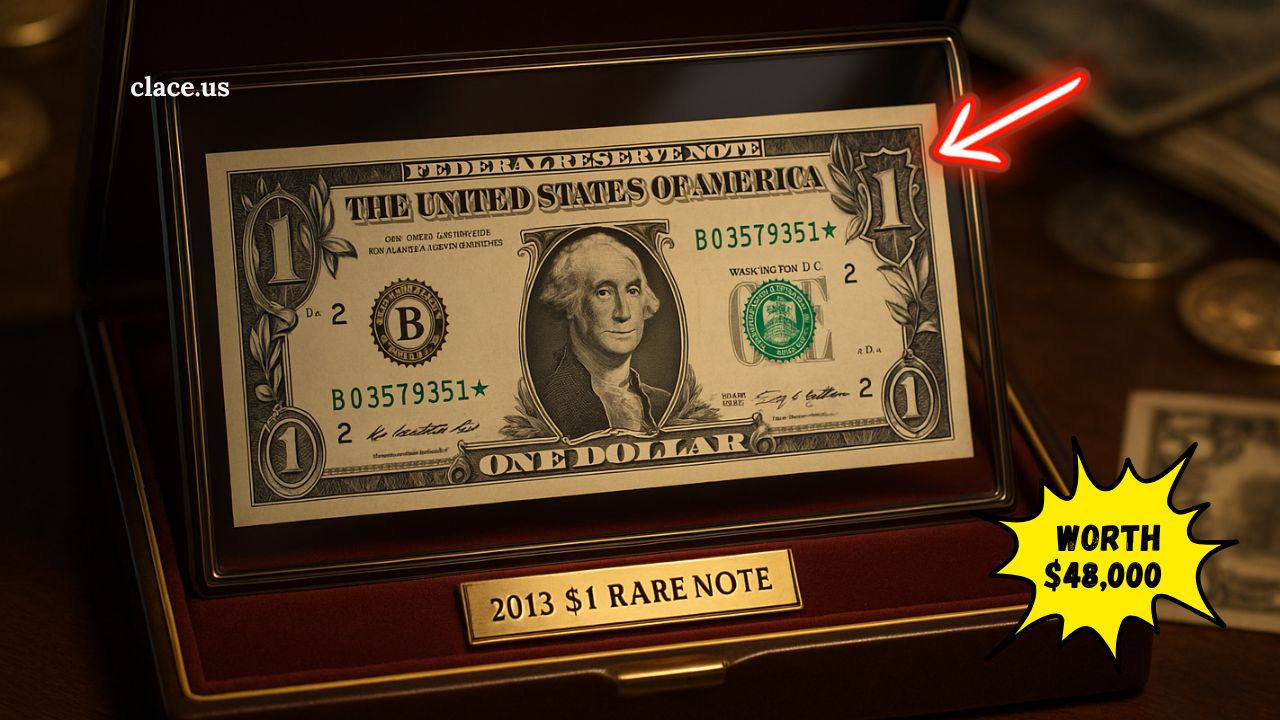2013 $1 Bill Auctioned For $48,000 – Is There A Fortune In Your Pocket?
Occasionally, everyday currency reveals extraordinary value. In one remarkable 2023 auction, a 2013 series $1 bill—thanks to a rare duplicate serial-number error—fetched a whopping $48,000, capturing the attention of collectors and casual fans alike.
This article unpacks the story behind that sale, explains what made the bill exceptional, and tells you how to check if your own one-dollar note might be worth more than its face value.
The Story of the Record-Breaking $1 Bill
In late 2023, a pair of 2013 series $1 star notes—one printed in Washington, D.C., and its near-identical twin printed in Fort Worth, Texas—came up for auction.
Both bore the same serial number, an anomaly caused by a printing error resulting in unintentional duplication.
Graded in high quality, this matched pair of star notes sold collectively for an astounding $48,000, far exceeding typical secondary values for one-dollar bills.
How Rare Is This Error? A Rarity
| Feature | Details |
|---|---|
| Error Type | Duplicate serial numbers on 2013 series $1 “star” notes |
| Printing Facilities | Washington D.C. and Fort Worth, Texas |
| Known Matched Pairs | Around 11 confirmed pairs in collector registries |
| Auction Sale Price (Highest) | $48,000 for one paired set collected and graded |
| Approximate Rarity | Extremely rare; most bills are worth only face value unless paired |
| Importance of Star and Match | Pairing original and *star replacement bills with identical serials |
| Ticketed Market Interest | High among advanced collectors and niche investment-grade currency traders |
Why These Bills Command Big Prices
- Mint Anomaly Appeal: The unlikely occurrence of identical serials from two facilities makes these bills instantly collectible.
- Scarcity: Less than a dozen confirmed pairs exist, and they grow rarer as bills age and get withdrawn from circulation.
- Auction-Driven Value: High-condition examples with verified provenance invite intense bidding—especially among star note enthusiasts.
- Registry Backing: Projects like Project 2013B help collectors register notes, verify matches, and authenticate sales—further increasing demand and value.
How to Check Your Wallet for a Hidden Gem
- Look for Star Notes: Only bills with an asterisk (*) at the end of the serial number (star notes) can form matched pairs.
- Watch the Serial: Compare serial numbers. If you find one that looks unique, explore online collector portals for matches.
- Register with Project 2013B: That registry is designed for tracking duplicates. If a match is found, owners are notified and often proceed to sell paired bills together.
- Condition Is King: Even matched pairs only reach premium auction values when graded in Gem or Near-Gem condition.
The 2013 star note duplicate error stands as one of modern U.S. currency’s most exciting collectible anomalies. A verified pair selling for $48,000 highlights the potential treasure that can lurk in benign-looking everyday money.
While such finds are rare, understanding how to identify, verify, and value these bills could be both fascinating and potentially lucrative.
If you happen to uncover one of these bills, you’re sitting on more than just a piece of paper—you’re a guardian of a rare artifact in circulation.
